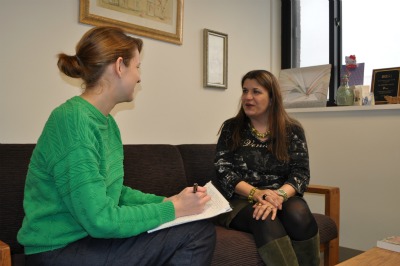
Photo by Megan Adams
Trahan: Much of your technofeminist scholarship advocates multi-authored, collaborative publication. Have you made or will you be making an effort to outright solicit, or maybe more-subtly encourage, these kinds of collaborative pieces for the Computer and Composition print journal?
Blair: That’s a really interesting question. I have to confess—maybe just because it’s all so new—I haven’t thought about it in those terms. I’ve thought about it more in terms of the kinds of topics we’d like to solicit. But I think in some ways the advantage of working with digital media in writing environments is that you sort of don’t have to say “Send us your collaborative scholarship” because so much of it does involve scholarly collectives: a team of writers, a program, some type of initiative happening on campus. So I think that those collectives naturally occur, not only because they might be feminist collectives—they might occur simply because of the academic labor that’s involved in digital media production; this type of curriculum development is inherently collaborative. Whether it evolves in a committee, as a part of program administration, or even, you know, the type of team teaching that might evolve through such collaboration. So, the answer is “Yes, we want that”—but I don’t think, quite frankly, that we have to work too hard to work to get that. We get so many collaborative pieces submitted to the journal, and that’s great. A lot of times it is teams of people in doctoral programs, or in graduate programs, where a faculty member or several faculty members are working with a collective of fabulous doctoral students...because they’re the future of the field, and they’re doing the cutting edge thinking about this type of work.